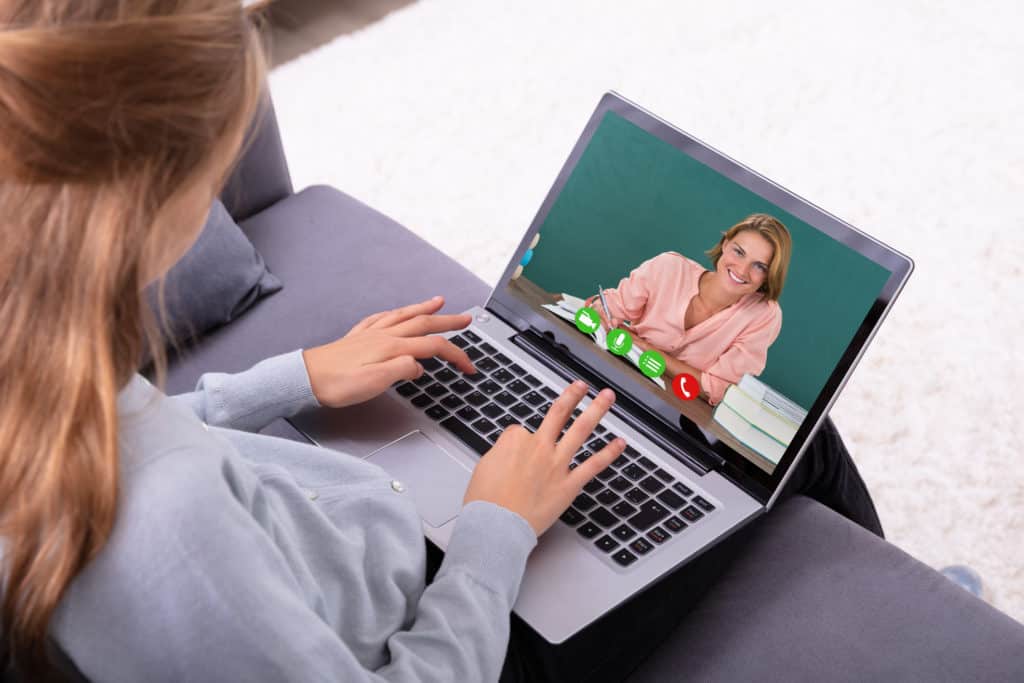While teachers are scrambling to get remote classes up and running in the wake of coronavirus, your students are facing work-at-home challenges too. Once your staff is prepared to teach classes online, you can help your students be ready for online learning as well.
Pass on these best practices to teachers to share with their students. Use our social buttons at the end of the article to easily share these distance learning best practices for students via social or email.
Find a quiet place for online classes
Try to find a quiet space where you won’t be interrupted. Ensure you have good lighting and wear headphones to help you focus on the online session.
Share your virtual class schedule
Speaking of quiet areas, work out a schedule with your family or roommates for class time. Young children may be home from school, and many parents are working remotely from the house too. Limit distractions as much as possible by planning your class time with everyone at home.
You may be sharing internet bandwidth as well. Let your housemates know when you need to attend class online. Ask others to limit streaming apps and large downloads while you’re attending class. It’s a tough ask while we’re all working and studying from home — we know!
Test your system
When you’re invited to an online session, the email usually includes a link to test your computer, tablet, or phone to ensure the video conferencing solution will work. Don’t forget to check your device the day before class, so you’ll have time to address any technical issues. It’s helpful to ensure you can log on to sessions using a mobile data connection, in case your Internet service is slow or interrupted.
Also, most video conferencing systems have chat and Q&A options. Ask your class leader ahead of time which option to use to submit questions and comments. Look for more information from your school or watch instructional videos like this one from Zoom.
Also, if you use any online accessibility tools for visual or hearing impairments, test that those work with your online class platform too. Ask your teacher to set up a test session if needed.
Complete assignments and download materials before class
Get familiar with the material and complete any assigned reading so you can follow along during the lesson and ask questions. Let your teacher know if you had any issues accessing materials.
Mute your cell phone during class
Turn off your ringer and vibrate function to avoid the temptation to pick up your mobile phone. Remember to pause all text and app notifications to limit distractions. Better yet, turn your phone off unless you’re using it to attend class.
Mute the mic on your device
Mute your device microphone when not speaking during a video conferencing class. Muting the mic will limit the noise others will hear. Make sure you know how to mute your microphone before class begins.
Remember it’s a real class
Keep in mind this is a real class, and you will be graded. Pay attention to the lectures, and do your assignments. Finally, deadlines are still deadlines. Complete your work on time and respect your fellow students’ and educators’ time during online classes.
Check out these additional Top Tips For Student Success in Online Courses shared by Nova Southeastern University.
The AVI-SPL team is ready to help you
We hope your students put these online learning best practices to effective use. The AVI-SPL team is here to help if you need assistance setting up your distance learning technology. Contact us now or call your local AVI-SPL office.

